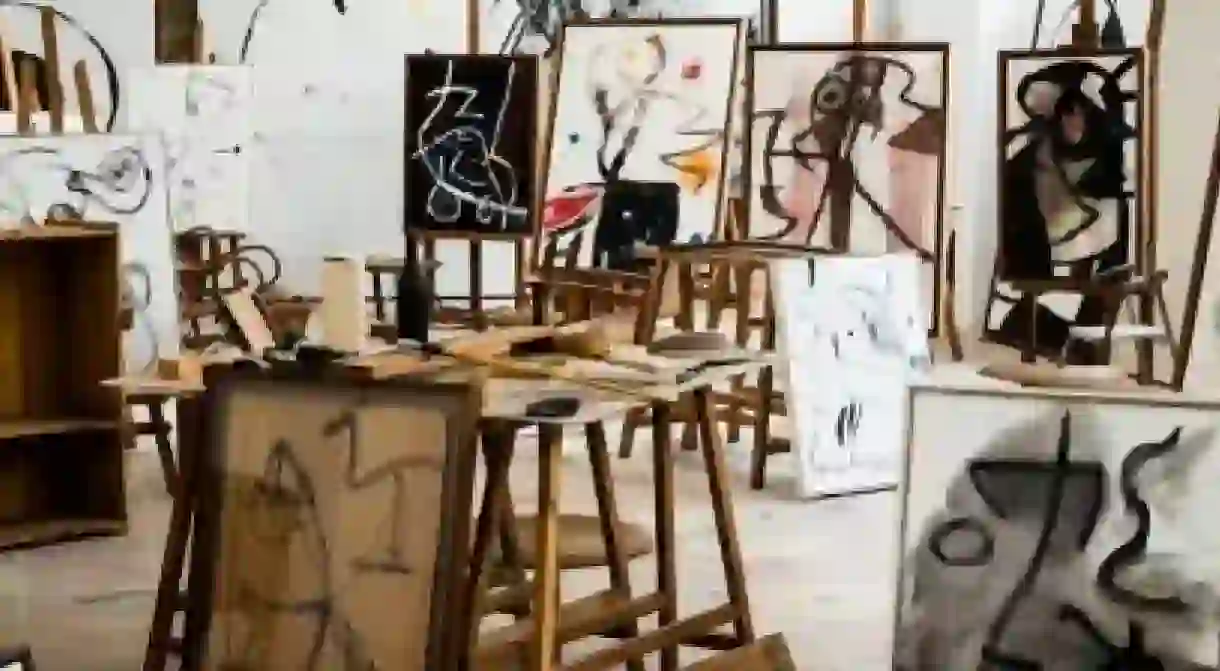The 6 Best Places to See Joan Miró’s Art

One of the world’s most famous Catalan artists, Joan Miró spent his early career painting still-life pieces and landscapes, before moving on to more experimental art, inspired by movements such as cubism and surrealism. Famous for his experimentation and relationship with the subjective, Miró has produced countless multi-media masterpieces. Here we explore the best places to view some of his intriguing art.

Tate Modern, London
Art Gallery, Bridge, Building, Museum

This famous and modern art gallery in central London is Britain’s national gallery of international art and forms part of a chain of famous Tate group galleries. The Tate Modern boasts a fantastic collection of 14 of Miró’s pieces, including ‘Head of Catalan Peasant’ (1925), and even two sculptures, including ‘The Tightrope Walker’ (1970). With their bright colors and surreal themes, the Miró’s colorful and engaging paintings captivate visitors to the Tate Modern. Showcasing one of the most astonishing artists of the 20th century, the Tate Modern boasts and examines various moments across his long career.
Fundació Joan Miró, Barcelona
Museum, Park

A place intended solely for displaying Miró’s artwork, it could be argued that there’s no better option than this for immersing yourself in the artist. With its origins in Miró’s first major exhibition in 1968, this building in Barcelona was set up as a point of inspiration for the contemporary art movement. Displaying not only his own work, but other contemporary artists too, Fundació Joan Miró is a gallery with a story to tell. A dynamic space, the gallery has been pleasing visitors since 1975, and boasts one of the largest single collections of Miró’s works.
Museum of Modern Art (MOMA), New York
Art Gallery, Building, Museum, Opera House

The centre of creativity, a place to be inspired, and a building boasting a fantastic modern and contemporary art collection, MOMA boasts captivating works from Miró, including ‘Catalan Landscape’ (1924) and ‘The Beautiful Bird Revealing the Unknown to a Pair of Lovers’ (1941), as well as some of his early simple sketches. The Spanish painter, sculptor, and printmaker is well represented in this popular and impressive museum. The first major museum exhibition to identify the core practices and strategies of Miró, there is much to learn and question here.
Centre Georges Pompidou
Library
Situated in Paris, this gallery is named after the President of France from 1969 to 1974. A modern and acute building which contrasts the surrounding traditional and historic buildings, the Centre Georges Pompidou houses the Musée National d’Art Moderne which stands as the largest museum of modern art in the whole of Europe. Entertaining over 150 million visitors since its establishment in 1977, the centre now boasts a fantastic contemporary art collection which is proud to include numerous pieces of Miró’s work, including his famous Blue Series, accompanied by insightful and informative essays. Centre George Pompidou © fmpgoh/Flickr
Fundació Pilar i Joan Miró a Mallorca
Museum

Not only does the Fundació Pilar i Joan Miró a Mallorca boast an impressive collection of Miró’s works, with paintings, drawings, sculptures, and prints numbering into the thousands, but the foundation has special links to Miró, having been his studio for several decades. Thanks to its unique nature, the foundation is the perfect place to come to grips with the elements that led to Miró’s creative processes, and thus gain a new appreciation of his already impressive works.
UNESCO building, Paris
Building
Miró spent a great deal of winter time in Paris, and even more time during the Spanish Civil War. His time in Paris opened his eyes to the hardships of life, prompting his more sombre period. Following World War II, Miró divided his time between Spain and Paris, producing ceramics and stained glass pieces as well as traditional paintings. Between 1957 and 1959 Miró was commissioned to produce two ceramic murals on the walls of the UNESCO building in Paris, entitled ‘The Wall of the Sun’ and ‘The Wall of the Moon’. Today, these murals are open to the public, and are an astonishing and powerful example of Miró’s work.













